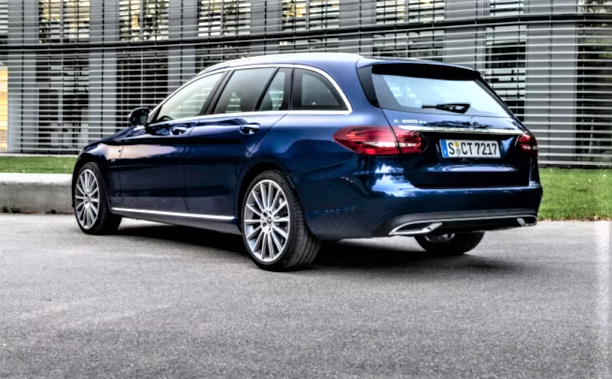OTTAWA – Canada and the U.S. may have one of the world’s most integrated auto sectors, with 2021 passenger vehicle imports into Canada from the U.S. worth $27.8 billion and exports to the U.S. worth $26.5 billion, yet trims and models can differ in the two markets.
This is despite both countries being significant manufacturing centers for legacy automakers General Motors, Ford and Stellantis along with major Asian manufacturers such as Honda and Toyota.
Indeed, some auto models sold in Canada simply are not available in the U.S. These include the Mercedes-Benz B-Class multipurpose vehicle.
Looking back in time, the Chevrolet Optra was sold in Canada, but not in the U.S. Similar to the Cobalt, but less expensive, the Optra no longer is sold by GM. The Chevrolet Orlando MPV was sold in Canada from 2011-2015. The Mercedes-Benz C-Class station wagon was pulled from the Canadian market in 2021.
An online auto sales platform, Ontariocars.ca, highlights the 2015-2019 Nissan Micra (pictured, below) sold in Canada, but not the U.S., and the Kia Rondo, sold in Canada from 2014-2017.

Reddit blogger MacaroniGlutenFree asked in 2021: “Why is a base (Mazda) CX-5 a Sport in the USA, but a GX in Canada? Why is a base (Hyundai) Tucson a SE in the USA, but an Essential in Canada? In the USA, a (Subaru) Forester Touring is the top trim. It’s only middle of the pack in Canada. Why?”
A blog on Hyundai Forums commented: “The Canadian Equivalent trim (2021 Sonata Hybrid Ultimate) comes with heated rear seats as standard while the U.S. model does not. It is not even an optional upgrade. I am baffled at why Hyundai USA would not include it while Canada would when both are manufactured at the same place and seems the Canadian model is a bit cheaper in terms of price. At least half of US is quite cold...”
So why the differences, when Canada and the U.S. have similar auto cultures, with both markets increasingly favoring SUVs, CUVs and pickups over sedans?
David Adams, president and CEO, Global Automakers of Canada, explains: “Historically Canadians do not get the same variety of trim levels as the U.S. because there is often not the volume to support the different trim/model variants. Canada typically gets the higher trim levels.” He adds that Canada often is offered the 4-wheel-drive or all-wheel-drive models “to address more winter conditions in Canada and reflect what consumers want.”
The trim restrictions do not always help with marketing, however: “Consumers in Canada often see U.S. ads that may reflect lower trim levels with lower pricing – confusing some Canadian consumers,” Adams (inset, below left) says. “This is one of the reasons some TV ads have a disclaimer in the commercial, ‘U.S. model shown.’”
 David Paterson, vice president of corporate and environmental affairs for GM Canada, notes Canadian consumers often prefer all-wheel drive models because of the snow and weather conditions. There also are preferences related to affordability because of issues such as exchange rates: “In Canada the population can struggle to afford what the American population can afford.”
David Paterson, vice president of corporate and environmental affairs for GM Canada, notes Canadian consumers often prefer all-wheel drive models because of the snow and weather conditions. There also are preferences related to affordability because of issues such as exchange rates: “In Canada the population can struggle to afford what the American population can afford.”
Manufacturers often are guided by their dealers over trims, rather than deciding in advance what trims will be made available, Paterson says: “If there is more demand for certain trim, we will do our best to supply them.” Another difference between U.S. and Canadian trims are daytime running headlights, which are required in Canada but not in the U.S., he says.
Andrew King, managing partner with DesRosiers Automotive Consultants, a Canadian market data supplier and advisor, says that, given the integrated nature of the North American market, Canada-specific models can and are made in the U.S. and Mexico, as well as Canada.
Ross McKenzie, outgoing managing director of WatCAR, the University of Waterloo Centre for Automotive Research, in Ontario, says OEMs have sold compact vehicles in Canada unavailable in the U.S. because they believe the Canadian market has “more value-conscious customers who were not prepared to pay as much for a new vehicle, and customers who valued fuel economy over vehicle comfort when compared to U.S. customers.”
Looking ahead, as the Canadian market shifts toward more battery-electric (BEV) models, Adams predicts that despite the challenges posed by Canada’s tough winters – such as losing charge when it is very cold outside – auto dealers still are making progress in selling BEVs, which automakers will consider when developing their BEV offerings in Canada.
“BEVs are a simpler technological solution as opposed to PHEVs (plug-in hybrids) which have two powertrains and still require all the same maintenance as ICE (internal-combustion-engine) vehicles,” he says. “Battery range has improved such that even 25%-30% degradation in cold weather is now a relatively minor inconvenience along with the fact that battery technology has improved to reduce cold-weather impacts.”

Mercedes-Benz took C-Class station wagon off Canadian market in 2021.





